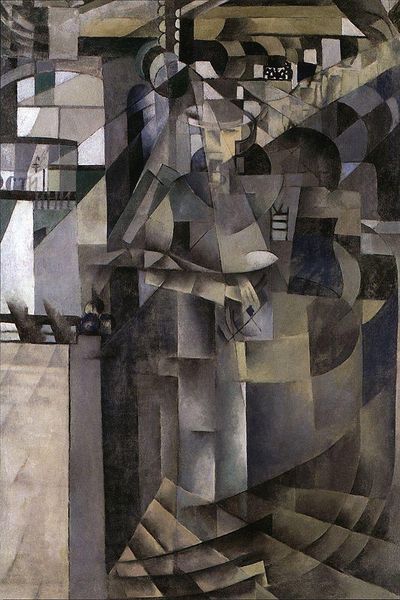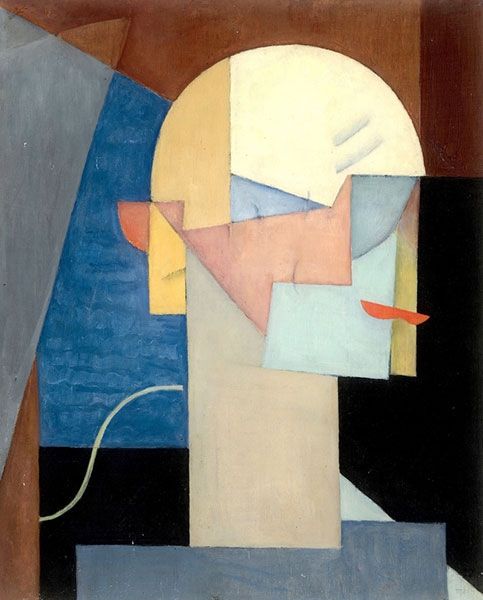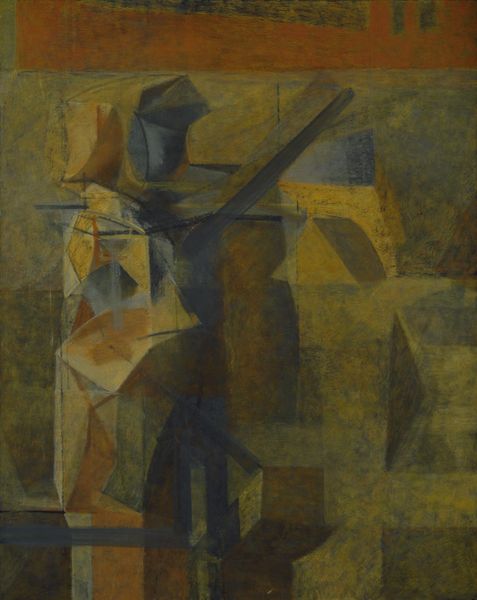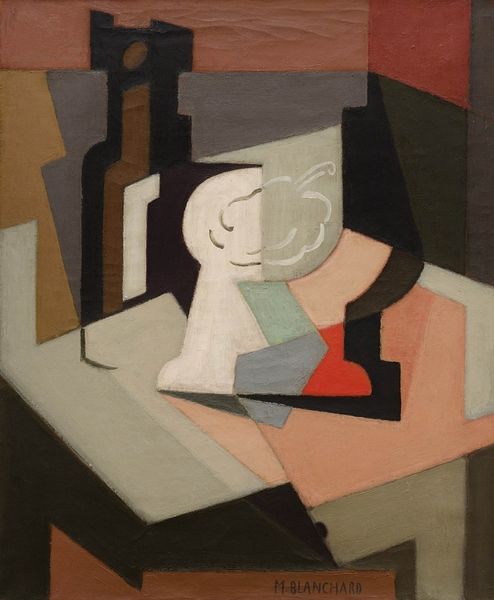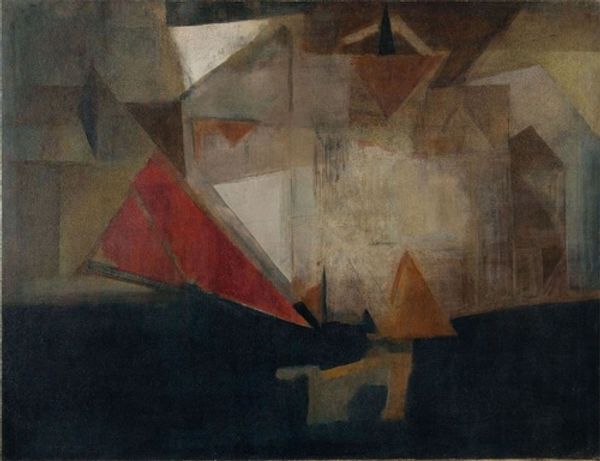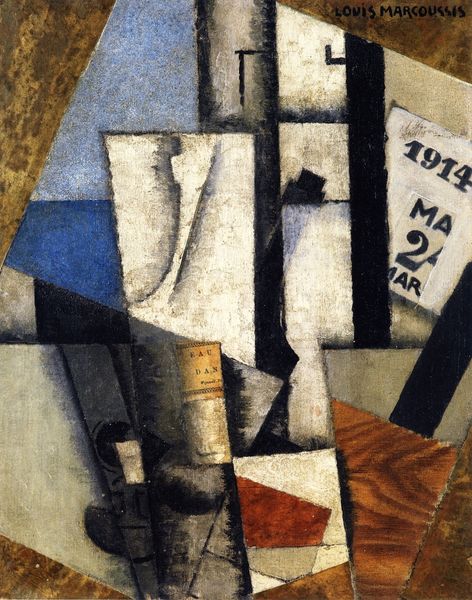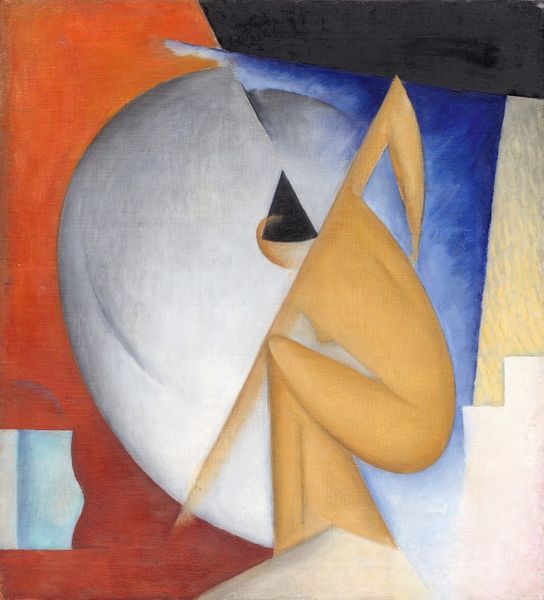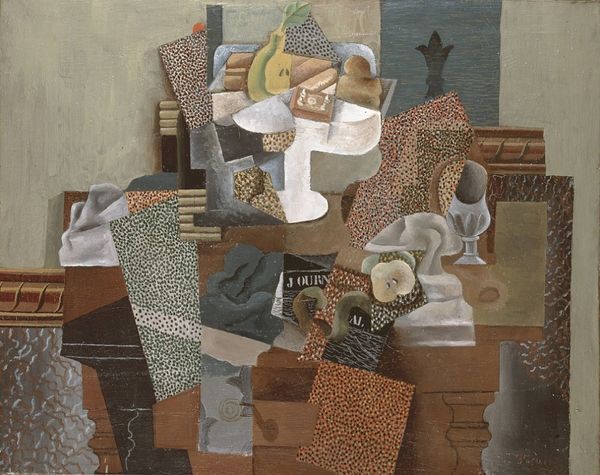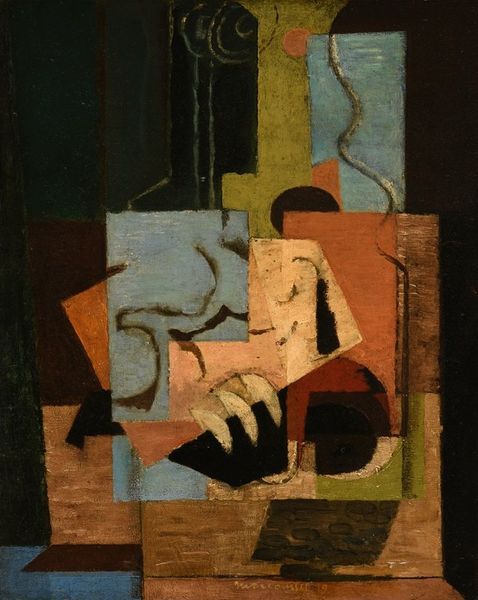
painting, oil-paint
#
portrait
#
cubism
#
painting
#
oil-paint
#
asian-art
#
painted
#
figuration
#
oil painting
#
geometric
#
history-painting
#
modernism
Copyright: Vicente Manansala,Fair Use
Curator: This is Vicente Manansala's "Philippines Mother and Child," created in 1965. You can see the distinct influence of cubism blended with a local sensibility. It's an oil painting. Editor: It's surprisingly gentle, isn’t it? Even with all those geometric shapes. The muted tones almost feel like a lullaby. Is she preparing the child for sleep, perhaps? Curator: The subject of the mother and child is a classic one, but Manansala reinterprets it through his unique lens. There's a sense of the everyday here. The geometric shapes suggest both the fractured realities and the underlying strength of familial bonds in the postwar Philippines. Editor: I love the little details, like the bare feet tucked together. It adds such a human touch to all that abstraction. There’s also a quietness to it. It reminds me of how even the most modernist architecture still bows to the curve of the earth somehow. Curator: Absolutely. The artist doesn’t present an idealized version, which aligns with modernist efforts to grapple with truth unburdened by overt sentimentality, but it still holds a profound sense of tenderness and humanity. Also notice the placement of that kerosene lamp. Its warm color contrasts the cold, almost sterile palette of whites, blacks, and greys. It serves as an actual, and symbolic, source of light. Editor: Yes, and it does serve that purpose, to both illuminate the family and light the way into the future. A hope that the new generation will achieve what past ones could not. Do you think Manansala knew what he was setting in motion for Philippine artists who followed? Curator: He certainly paved the way. Manansala's unique blend of cubism and Filipino genre painting created a vocabulary that countless artists since have drawn inspiration from, each building upon his legacy. Editor: This painting stays with you. I keep seeing new lines, and new perspectives in it. Like memory itself—always reshaped but always recognizable. Curator: A fitting summation. Manansala invites us to see not just a mother and child, but the complex, fragmented, and ultimately beautiful essence of humanity reflected in a specific historical and cultural context.
Comments
No comments
Be the first to comment and join the conversation on the ultimate creative platform.


